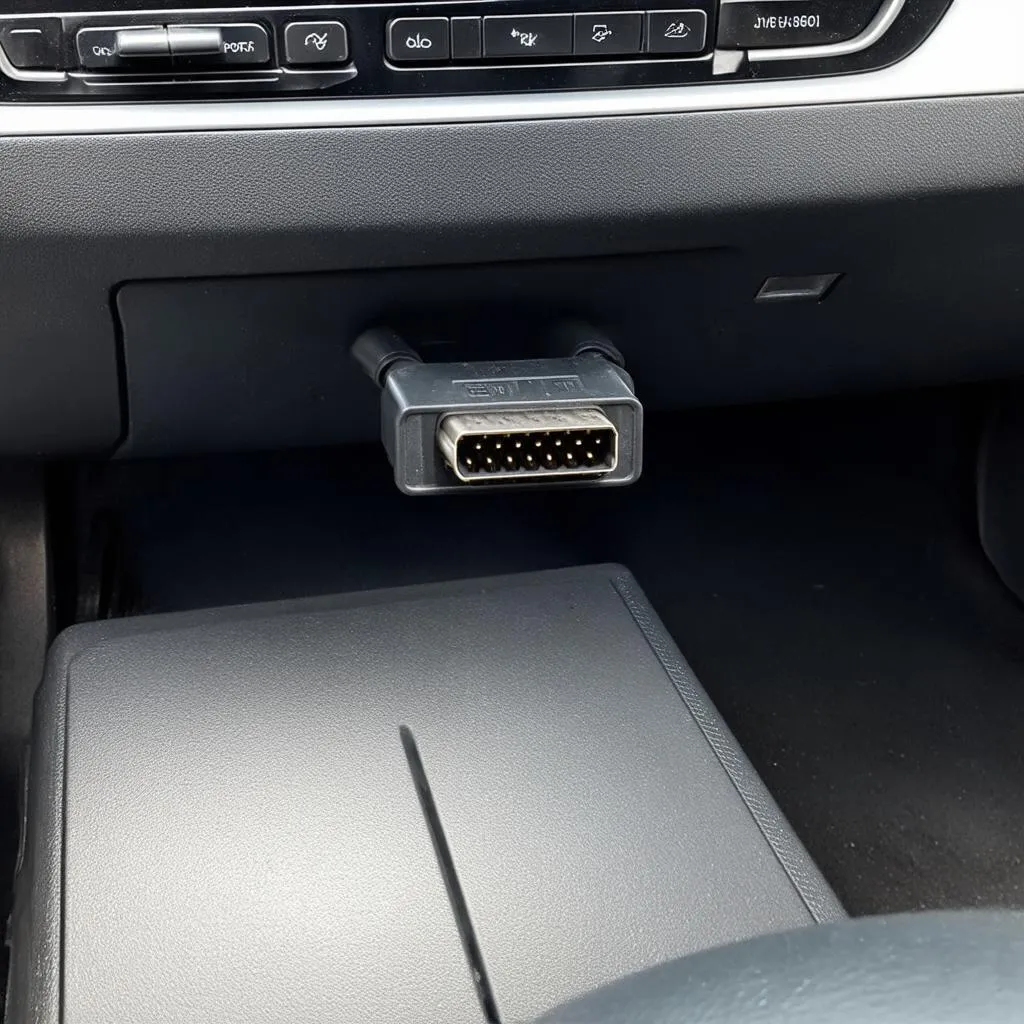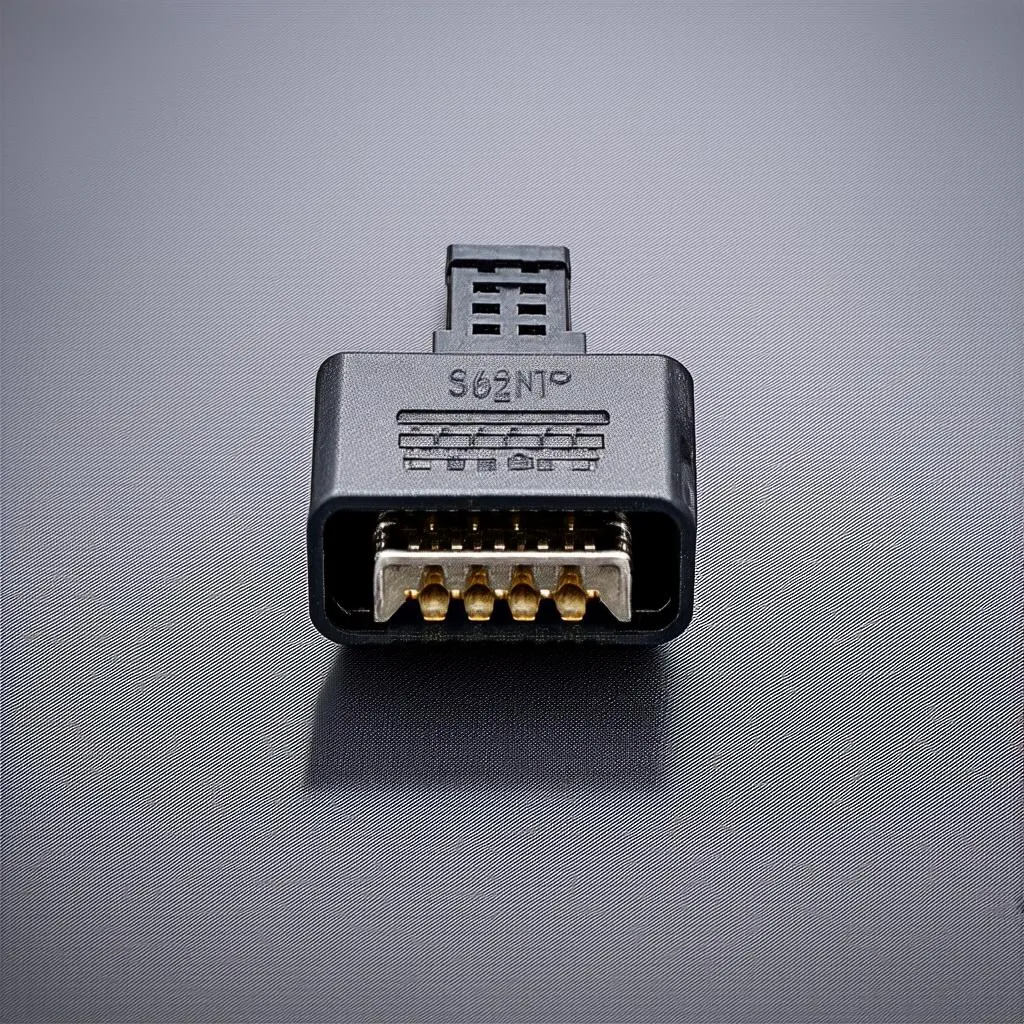Ever wondered about that mysterious port hiding somewhere in your car’s interior? You know, the one mechanics seem to gravitate towards like moths to a flame? That, my friend, is the OBD port, also known as the OBD-II port or the diagnostic port. It’s the gateway to your car’s computer system, and knowing its location can be surprisingly useful.
Imagine this: you’re driving down a scenic California highway, headed towards Big Sur, when suddenly your check engine light decides to put on a show. Your car seems to be running fine, but that pesky light is causing some serious anxiety. What do you do?
Well, if you know where to find your OBD port, you can use a handy device called an OBD-II scanner (like those fancy Dealer Scanners for European Cars!) to get a better understanding of the issue. It’s like having a personal mechanic whispering secrets from your car’s engine.
What’s the Big Deal About the OBD Port Anyway?
The OBD port, or On-Board Diagnostics port, serves as the communication hub for your car’s computer system. Think of it as a translator between you and your car, allowing you to access a wealth of information about your vehicle’s health and performance.
From a mechanic’s perspective, the OBD port is an invaluable tool for diagnosing problems quickly and efficiently. By plugging in a scanner, they can read diagnostic trouble codes (DTCs), monitor live data streams from various sensors, and even perform certain system tests.
But it’s not just for the pros! Even if you’re not a gearhead, knowing where your OBD port is located can be incredibly helpful. Here’s why:
- Check Engine Light Mystery Solved: Instead of panicking at the sight of that dreaded check engine light, you can use an OBD-II scanner to read the code and get a better understanding of the problem. This can save you time and money by helping you determine if it’s a minor issue you can address yourself or something that requires professional attention.
- Unlock Hidden Performance Data: Ever wanted to know your car’s actual horsepower or monitor its real-time fuel economy? With the right OBD-II scanner and some know-how, you can access a treasure trove of performance data hidden within your car’s computer.
- DIY Car Maintenance and Modifications: Feeling adventurous? The OBD port can even be used for certain DIY car maintenance and modification tasks. For example, you can use it to reset your oil life monitor after an oil change or to program a new key fob.
So, Where is the OBD Port Hiding in My Car?
The OBD port is typically located on the driver’s side of the vehicle, under the dashboard, somewhere between the steering wheel and the driver’s side door. However, the exact location can vary depending on the make, model, and year of your car.
Can’t find it? Don’t worry! Many websites and even car manuals provide specific instructions on locating the OBD port for different car models. You can also try searching online forums or watching YouTube videos.
Still stumped? It might be time to call in the professionals. A trusted mechanic or even a knowledgeable friend can help you locate that elusive OBD port in no time.
Common OBD Port Locations:
- Under the Steering Column: This is one of the most common locations, particularly in older vehicles. Look for a rectangular-shaped connector with a 16-pin configuration.
- Above the Foot Pedals: In some cars, the OBD port might be located in the footwell area, above the pedals.
- Inside the Center Console: Some manufacturers, especially those known for their sleek interior design, may tuck the OBD port inside the center console, either under the armrest or behind a removable panel.
- Behind the Ashtray: Remember ashtrays? In older vehicles, you might find the OBD port hidden behind the ashtray or cigarette lighter.
 OBD Port Location Under Dashboard
OBD Port Location Under Dashboard
FAQs: Your Burning OBD Port Questions Answered
Q: Can I drive my car with something plugged into the OBD port?
A: Yes, you can generally drive with a device plugged into the OBD port, especially if it’s a small, unobtrusive OBD-II scanner. However, it’s always a good idea to consult your car’s manual or a trusted mechanic to be sure.
Q: Are all OBD ports the same?
A: While most modern cars use the standard 16-pin OBD-II connector, older vehicles (pre-1996) may have different types of diagnostic ports. If you’re unsure about your car’s specific connector type, consult your car’s manual or a mechanic.
Q: Can I damage my car by plugging something into the OBD port?
A: It’s highly unlikely that you’ll damage your car by plugging a compatible device into the OBD port. However, it’s essential to use caution and avoid forcing any connections.
Q: I found my OBD port, but it’s covered by a cap. What should I do?
A: Many OBD ports come with a protective cap to prevent dust and debris from entering. Simply remove the cap to access the port.
 Close Up of an OBD Port
Close Up of an OBD Port
Need More Help with Your Car’s Diagnostic Port?
We hope this guide has helped you demystify the OBD port and its location in your car. Remember, this little port can be your secret weapon for understanding and even enhancing your driving experience.
Still have questions about your car’s OBD port, Dealer Scanner for European Cars, or any other automotive conundrums? Our team of expert mechanics is just a message away!
Contact us on Whatsapp at +84767531508 for personalized assistance and expert advice on all things automotive. We’re here to help you keep your car running smoothly, mile after mile.
Want to explore more car-related topics? Check out these related articles:
- Does OBD-2 Support iPhone?
- Charging Battery Through OBD
- Location OBD Port
- First Year for OBD-II
- Car OBD Port Pinout
Let us know in the comments below if you have any other car-related questions you’d like us to answer! Happy driving!